Hey, you know what I haven’t done in a while? Compile my old school Dungeons & Dragons twitter threads into a post! So here we go…
Undermountain: Stardock (1997), by Steven E. Schend. I bought this one specifically because I thought I might adapt it’s plot into one of my own campaigns in the future!
This adventure has a very dubious distinction: according to DriveThruRPG, it was the last RPG product published by TSR before their bankruptcy! (Though Wizards of the Coast would publish more adventures under the TSR label for several years.)
The adventure is set in the Forgotten Realms, and in particular in the city of Waterdeep, below which is the “Dungeon of the Mad Mage,” the most famous dungeon in the realms. (Below is the most recent 5th edition version of the dungeon, which maintains a similar floorplan to the earlier 1990s version.)
The dungeon is “managed” by an insane and powerful wizard named Halaster, and he keeps it stocked with monsters and controls gates that allow transport between the different dungeon levels and the surface world.
The premise of the adventure: Halaster has been kidnapped by a powerful organization, and without his supervision, the dungeon gates have spun out of control, disgorging monsters throughout the city! The PCs are tasked with rescuing Halaster, which involves passing through one of his many dungeon levels and to his asteroid base Stardock, where he is being held.
Stardock thus makes a connection to another huge product line of later TSR: Spelljammer, basically D&D in space!
Before making it to the asteroid to free Halaster, the PCs must travel through a crystal labyrinth which contains a portal to Stardock. The image below gives just a small sample of the map. In play, the PCs must bump against the invisible walls to find their way.
I was actually hoping to use this adventure for my own group at some point, but I found it a little disappointing. There is relatively little variety in the monsters and scenarios featured. What you see on the module cover is largely what the PCs will face.
The most fun happens before the dungeon, in fact: the malfunctioning gates become an event referred to as “Halaster’s Harvest,” and the adventure gives lots of details of the chaos that ensues throughout the Realms.
I may still use the broad adventure idea in the future, but will tweak it with more variety in its encounters to make it a bit more unpredictable!
Greyhawk (supplement 1), by Gygax and Kuntz (1975). Time to go reeeeeally old school!
Before you assume I’m rich, let me note that this is a 5th printing, which only cost me $100! I’m pretty sure a 1st printing would be closer to $1k.
Despite its name, the book doesn’t share any info about Gygax’s campaign world of Greyhawk, but is instead a detailed rules supplement that fleshed out much of the game into the one we know today, with new combat rules, new monsters, new classes, and new magic.
This was the place that the thief was introduced as a class, eventually becoming in later editions the beloved rogue.
Paladins also made their appearance for the first time as a sub-class of “fighting men.”
Lots of spells made their appearance for the first time in Greyhawk; I believe the beloved “magic missile” is one of those.
Plenty of iconic monsters also made their first appearance here, including the gelatinous cube and the fearsome beholder (though not so fearsome in the cover image).
Iconic magical items also appeared for the first time in Greyhawk. I single out only the terrifying sphere of annihilation.
The art is quite quirky! Though not *bad* per se, it did not have the polish that would appear in later editions of the game. Here is a lizardman, for example.
… and modern D&D players will have a hard time recognizing the bugbear, thanks to his… pumpkin head?
I was curious about Don’s Hobbies and Toys, and it was apparently an iconic shop in Rockford, IL in the 1970s! So I even know where my Greyhawk book was purchased, and it is historical itself.
S4: Lost Caverns of Tsojcanth (1982), by Gary Gygax. Here’s a true classic adventure by one of the creators of D&D! I’ll do some significant spoilers here, so skip to the next entry if you want to avoid them.
Based on a tournament adventure that Gygax ran in 1976, LCoT is really one of the first “mega” modules that appeared for D&D, at least by the standards of the time. It even came in two booklets: one for the adventure, one for new monsters & treasure!
(I always enjoyed that inner cover illustration of adventurers tripping a giant — the sort of strategy that wasn’t covered in any way, shape or form by 1e rules.)
In the adventure, the characters are hired to track down the lost treasure of the powerful sorceress Iggwilv, hidden in the Lost Caverns in the Yatil Mountains.
If you’re not familiar with Iggwilv, she was originally an adventurer who had the name Tasha… and has a 5e sourcebook named for her!
Since the location of the Lost Caverns is unknown… because they’re lost… the PCs must undertake a perilous wilderness adventure to find them. The encounters here can also be quite deadly!
A local safe base of operations can be found in a gnome village… provided the PCs don’t act like jerks and get banned from the site.
The caverns themselves are extremely dangerous, filled with perils both natural and magical and tons of new monsters that would later find their way to the Monster Manual 2, such as Fomorian giants.
Rereading the adventure, I was struck by how deadly it is. Gygax wasn’t fooling around: careless adventurers could easily get themselves all killed. He was pretty merciless about it!
In another area, the characters can take magical portals to other dimensions. But the portals send them to random destinations, so it could happen that most of the party ends up in one place… and one poor PC ends up facing a horde of deadly monsters alone! LCoT is a good reminder of how less “heroic” 1e D&D was. Even powerful characters could be moments from annihilation if they acted rashly or foolishly.
Booklet 2 of LCot contained a variety of new monsters, new spells, and new magical items. Many of them do not appear in the adventure, but are provided only for reference or future use, like Iggwilv’s demon lord lover, Graz’zt.
Among the powerful spells introduced in LCoT, as part of Iggwilv’s personal collection, is Banishment, the bane of many a 5e Dungeon Master! (Because it can send away some of your most powerful monsters temporarily or permanently.)
Perhaps the best part of LCoT is its surprise twist: the “treasure” that Iggwilv had hidden away is her daughter, Drelzna the vampire, who awakens when the PCs arrive and is perfectly happy to use the appearance of a damsel in distress to wreak surprise havoc on the party!
Drelzna is some of the first historical continuity I’m aware of in D&D, as her defeat is referenced in the 1985 Gygax party-killer Isle of the Ape, in which players must thwart more of Iggwilv’s plans!
The Lost Caverns had a sequel of sorts, WG4: The Forgotten Temple of Tharizdun (1982), which has the party pursue a band of monsters from the Caverns to the Forgotten Temple.
Let me conclude this thread with the best image of Iggwilv, which was done by James Ryman and appeared on the cover of Dungeon 149!
Caverns Deep (1980), by Glenn Kidd and Marc Rubin. Let’s end this post with an ultra-obscure product!
Caverns Deep was published by Ral Partha Enterprises, a classic publisher of miniatures, and seems to be their answer to the question: “How can we get people to buy more miniatures?”
The self-contained game includes 20 minis: 8 dwarves and 12 goblins, and features an underground battle between the two races!
The game is simple enough: over 20 rounds the two sides battle. The dwarves seek to protect their treasure, and the goblins attempt to kill all the dwarves and/or steal all their treasure.
The goblins have essentially unlimited reinforcements. The dwarves have magic weapons and can choose where to put their treasure rooms on the map at the start of the game.
Each side has a few tricks up their sleeves. The goblins have tunnels they can place to produce reinforcements, and the dwarves can place traps in their treasure troves to wipe out the greedy goblins.
As I said, Ral Partha was the premiere miniature company at the time, though technology has progressed IMMENSELY since then! Here’s one of each side. Look how tiny they were!
Overall, Caverns Deep isn’t a particularly spectacular game or product, but it is a fun bit of history showing how miniatures companies tried to boost the number of minis they could sell!
Okay, that’s it for this edition of old school Dungeons & Dragons — more another time!

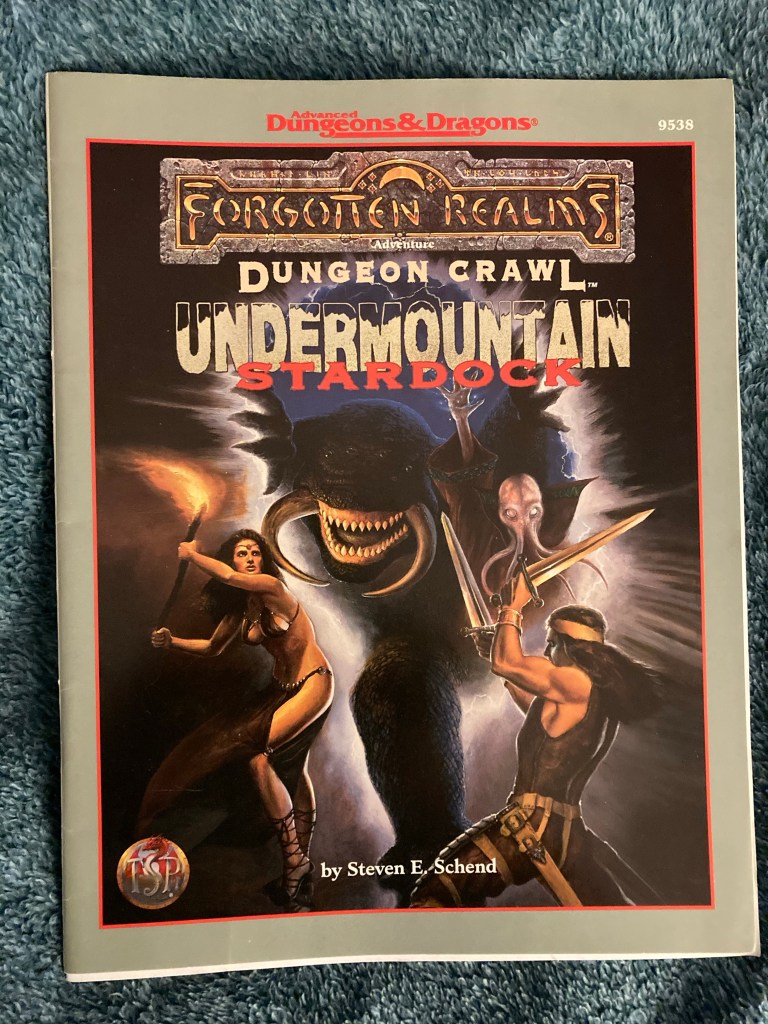


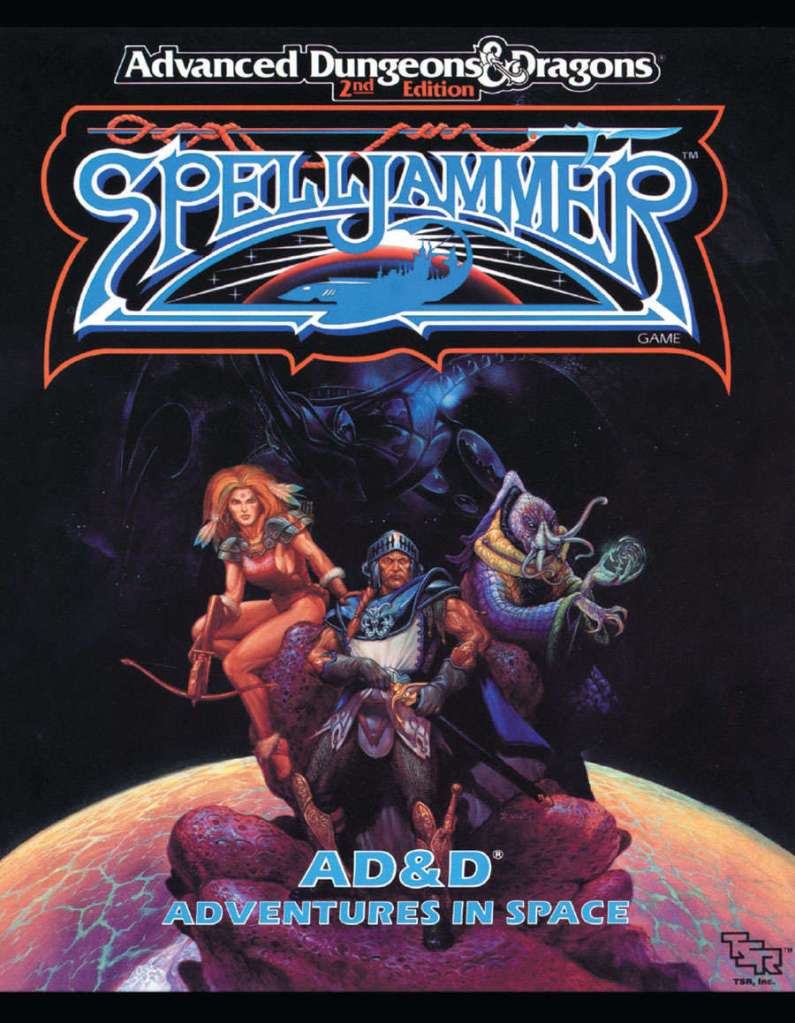


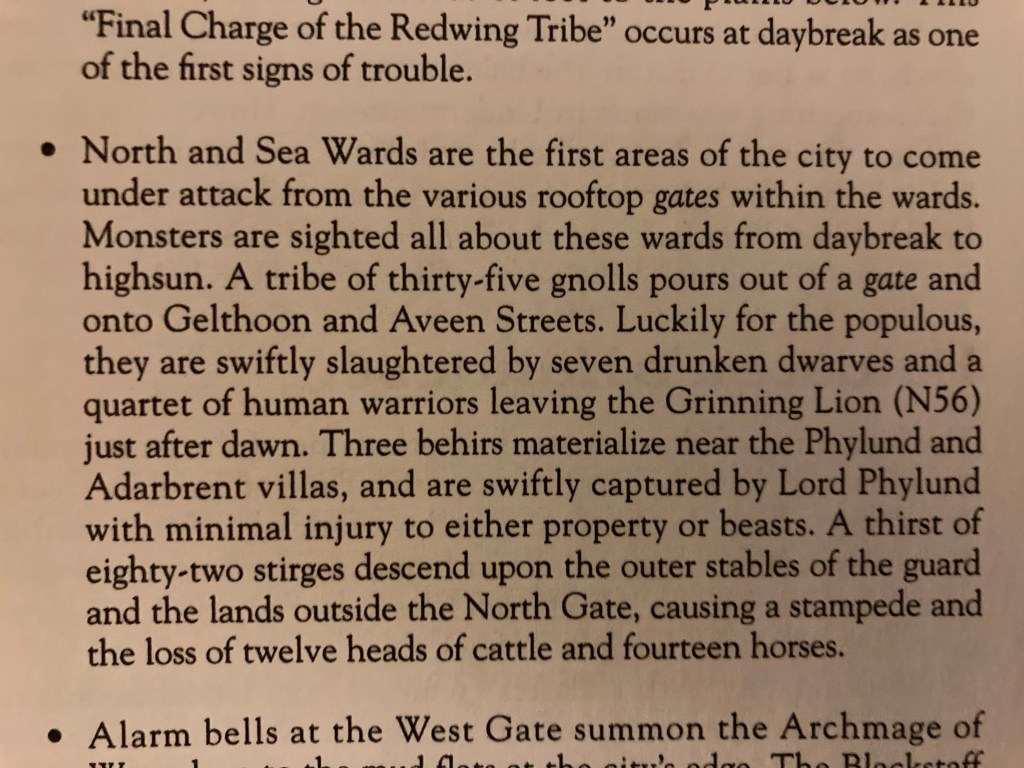
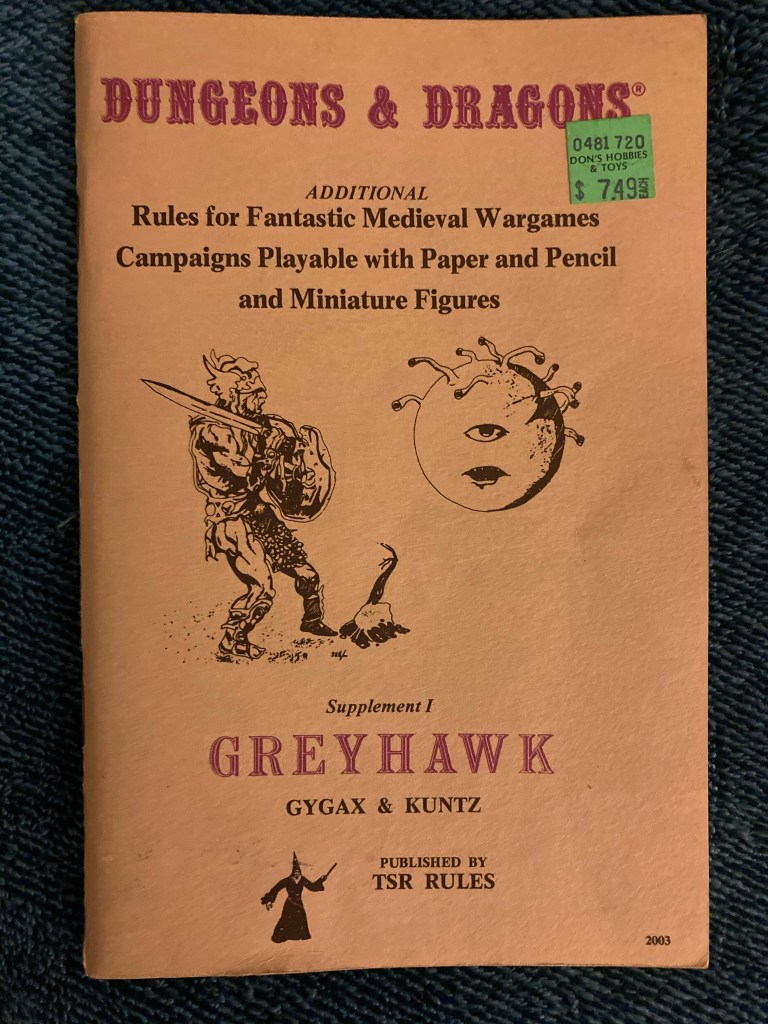





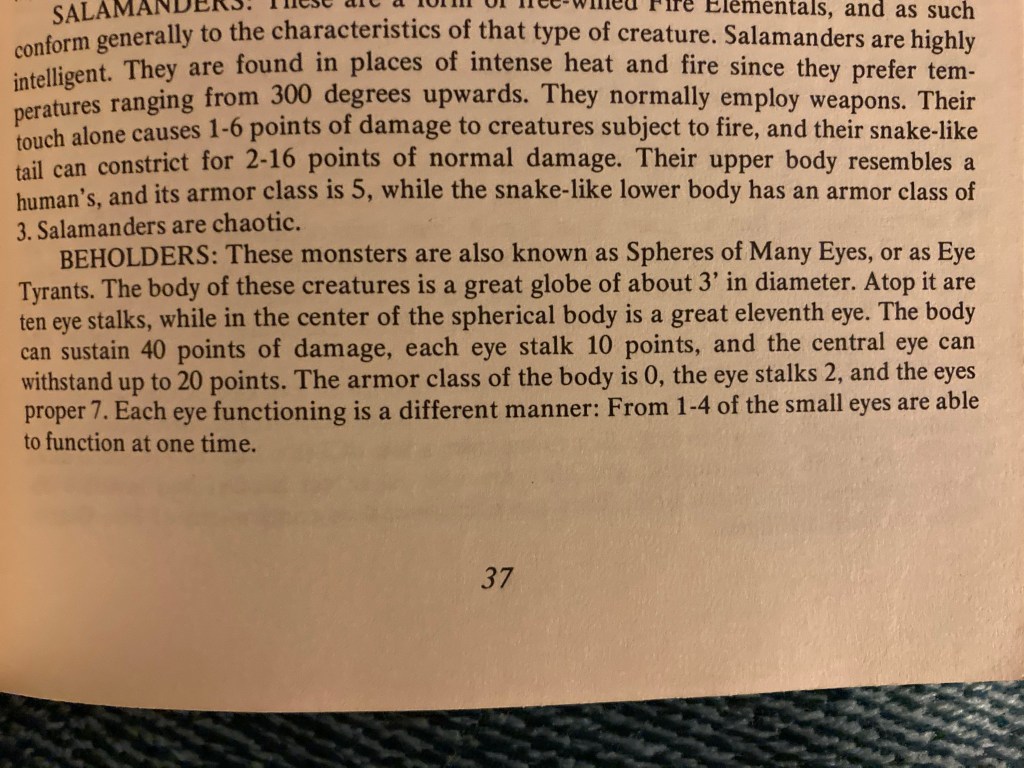


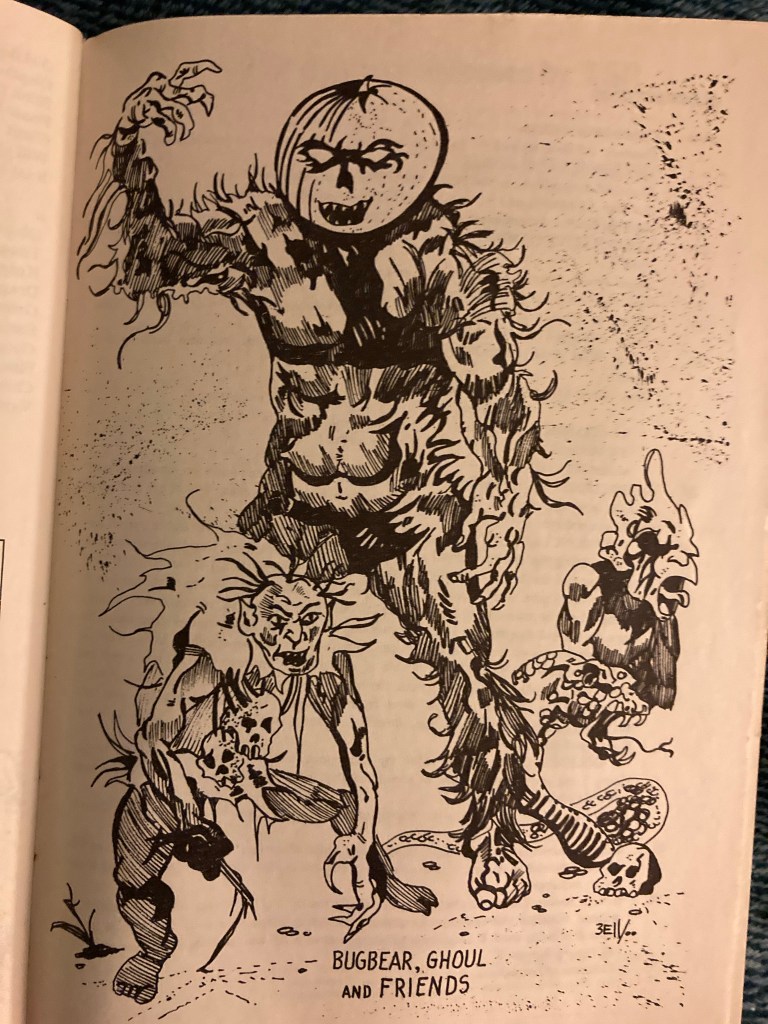
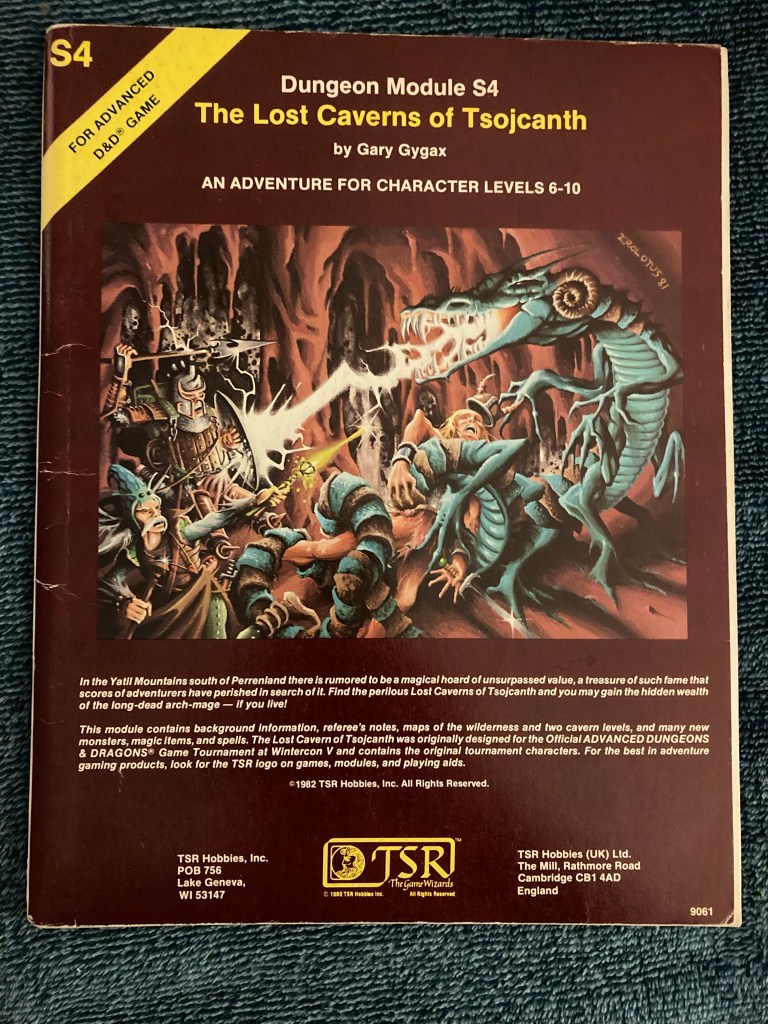
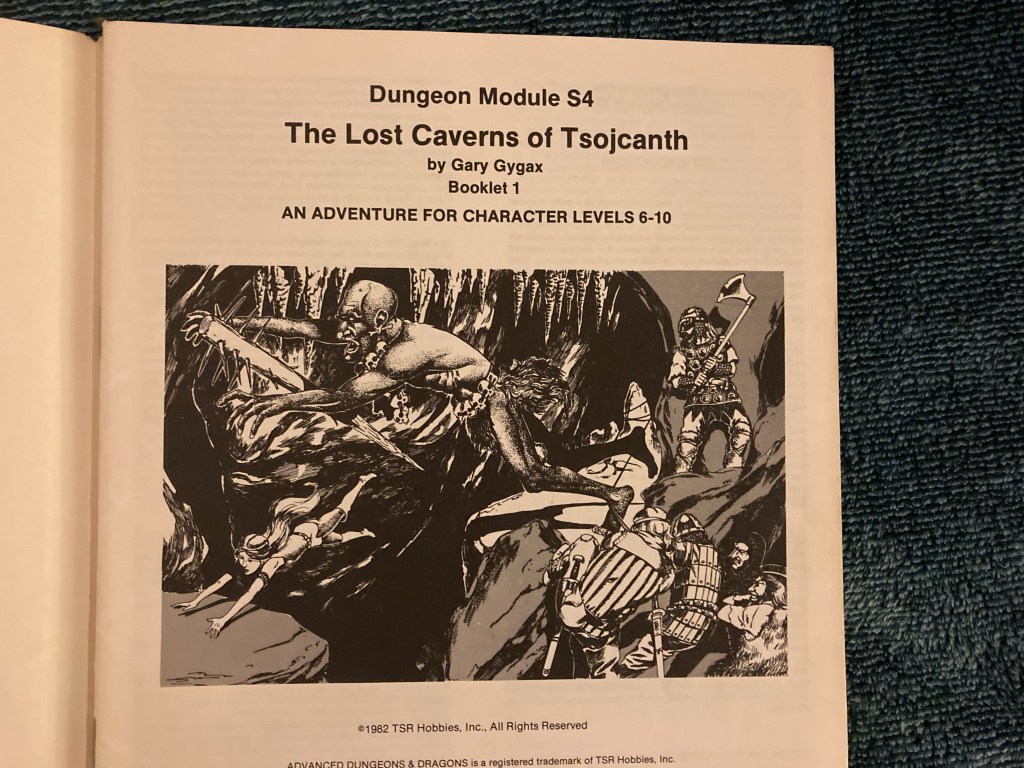



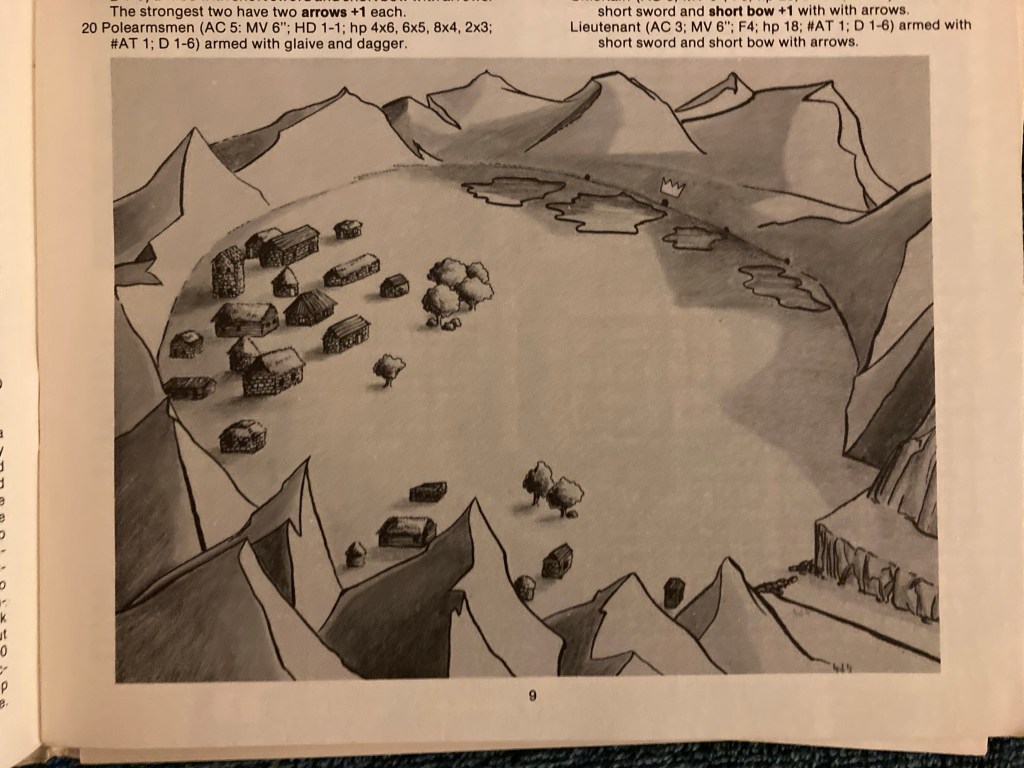



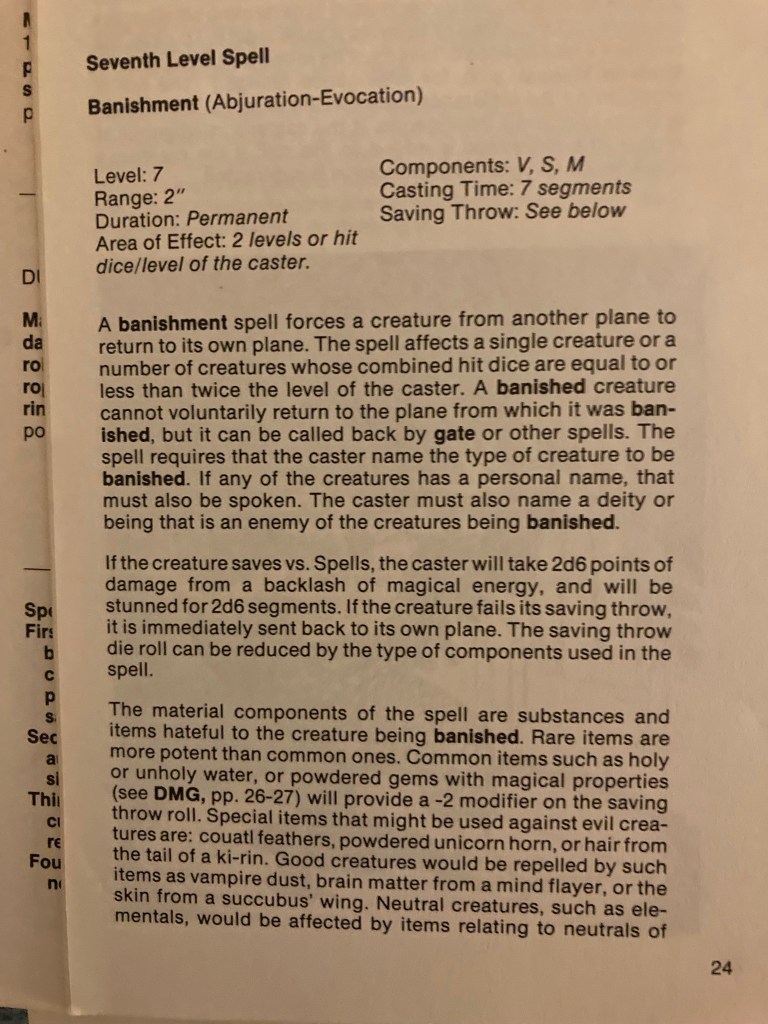
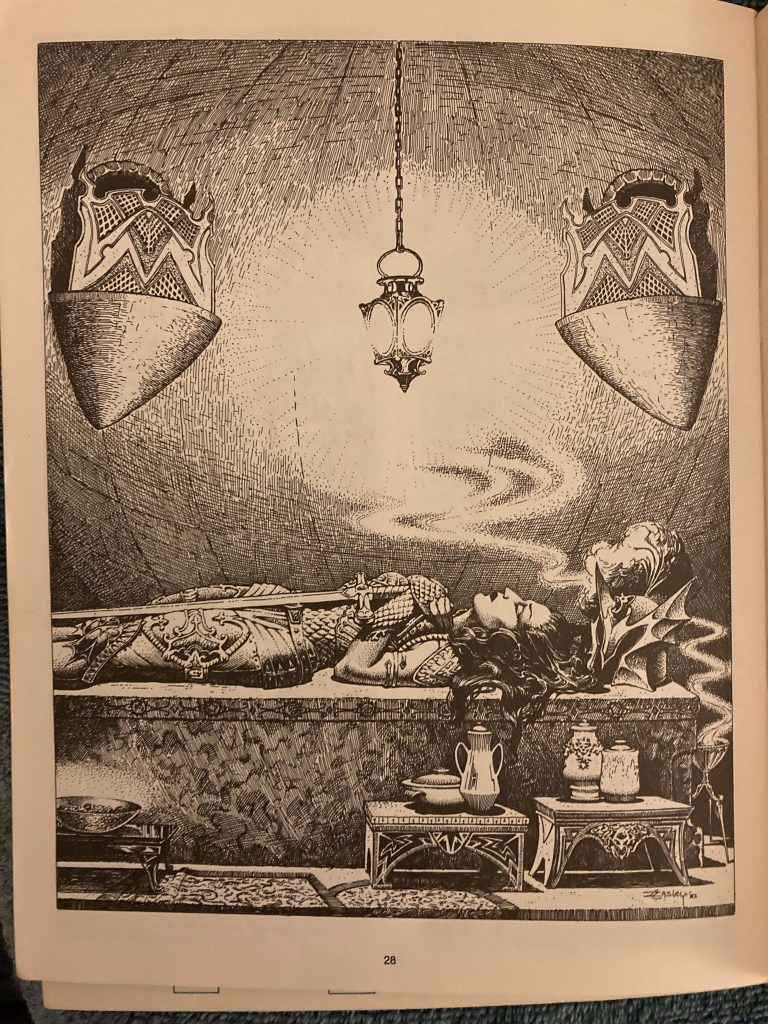





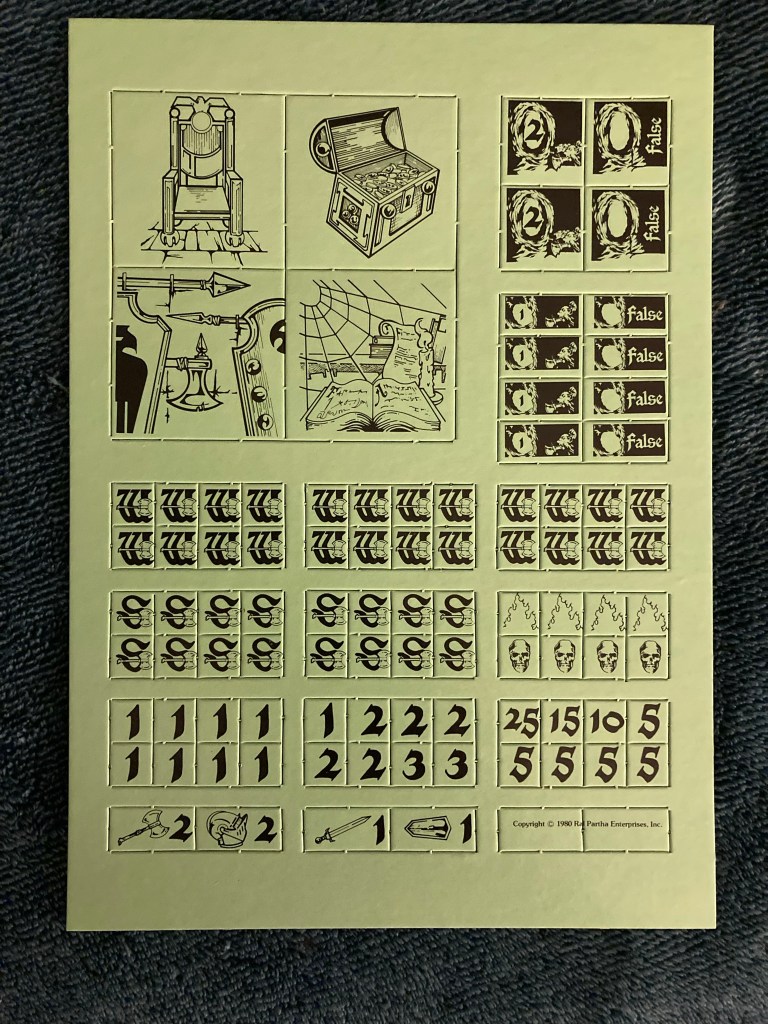


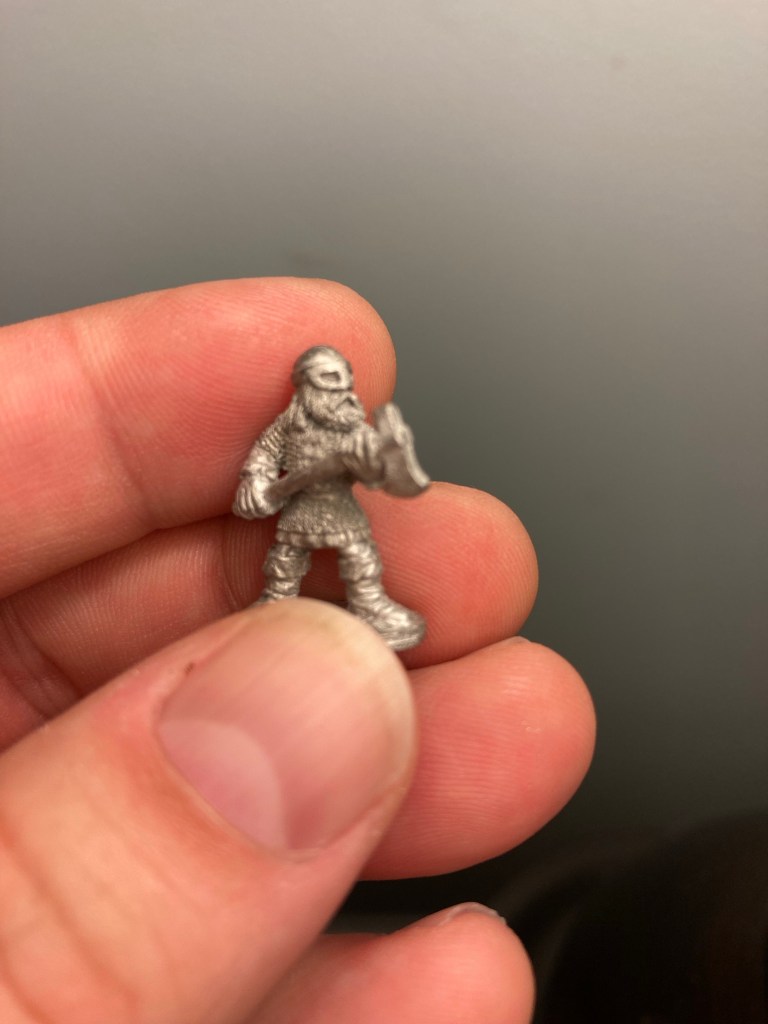


Really enjoy these recaps, interesting connections – didn’t know Iggwilv / Tasha were the same. I’m seldom on Twitter, so this is great.
Thank you!
Reblogged this on DDOCentral.
I am enjoying your walk through the collection. You clearly are devoted and must gave quite the stash. Thanks for including comments like wanted to add the plot to your story line yet not really doing that. Having started play in 1981 it is super cool to revisit some of the TSR material you cover. Sadly other producers were not readily available in Montreal.